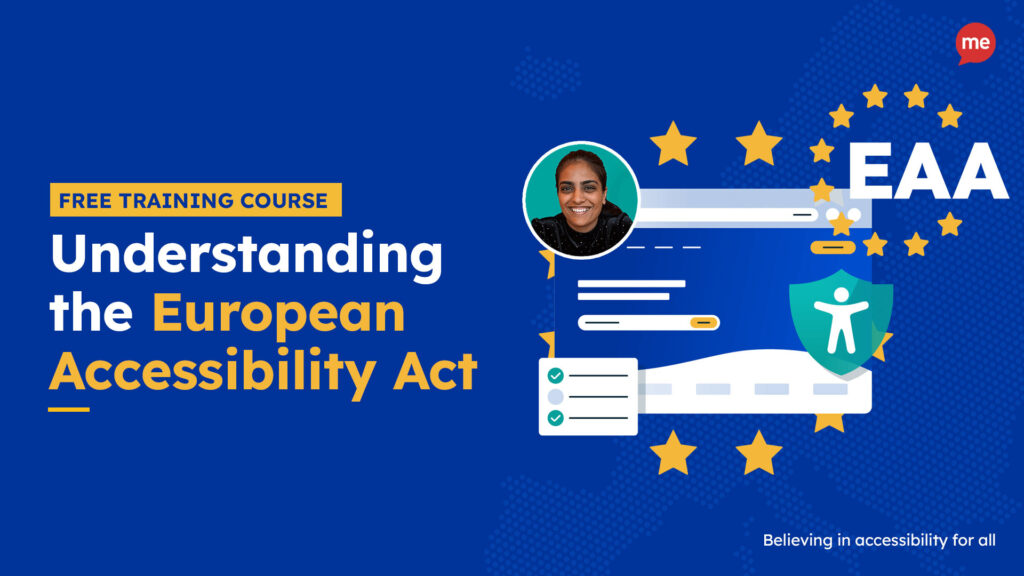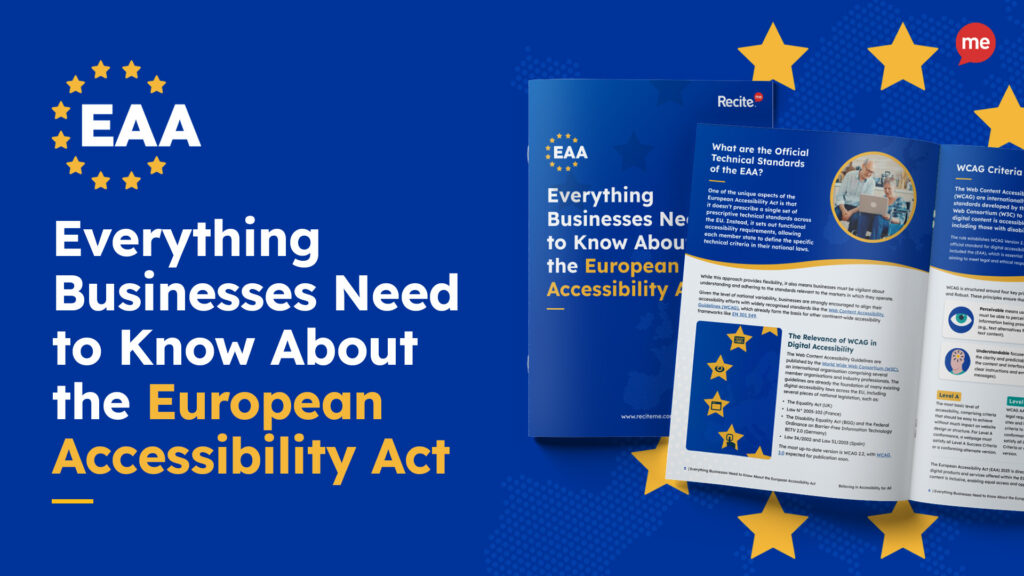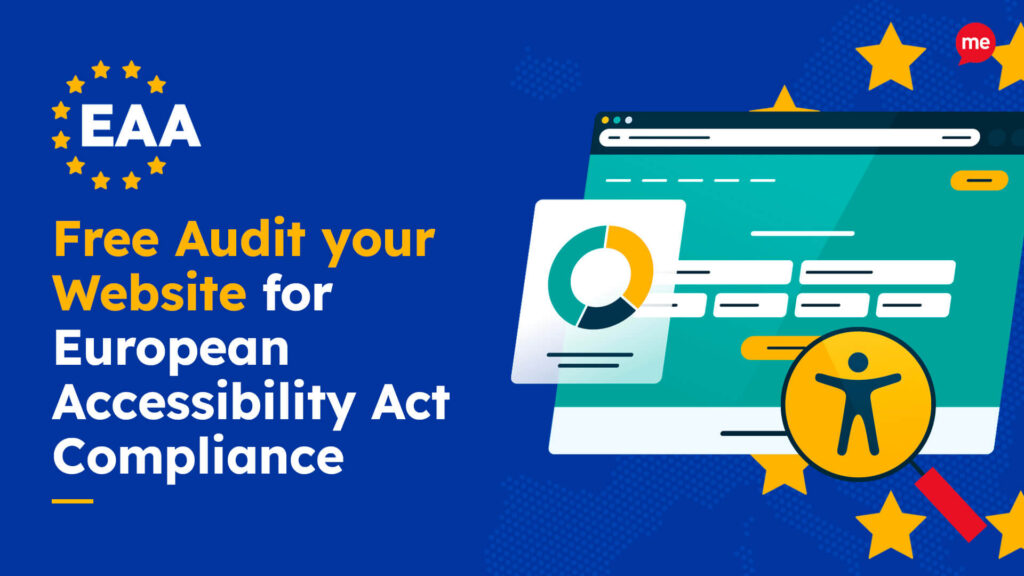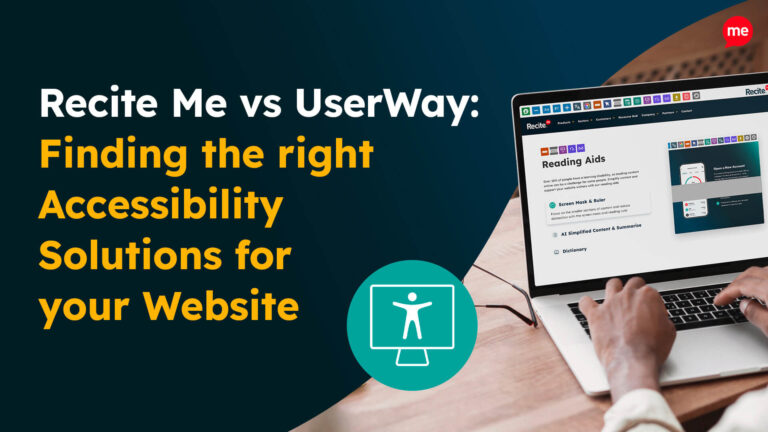Get Your Free European Accessibility Act Checklist
Download NowSince the dawn of the European Accessibility Act (EAA), ensuring equal access to online products and services has become a legal requirement for businesses in Italy and other European countries alike. But the EAA is more than just a regulatory checkbox; it represents a pivotal shift towards a fairer society, transforming the way businesses across the continent operate.
It acts as a call to action, demanding that businesses make their digital content accessible to everyone, including the millions of people living with disabilities. Beyond financial penalties, failure to comply risks alienating a huge portion of your potential customer base — just imagine the missed opportunities associated with such an oversight. Want to know more about the EAA in Italy and what it means for your business? Look no further.
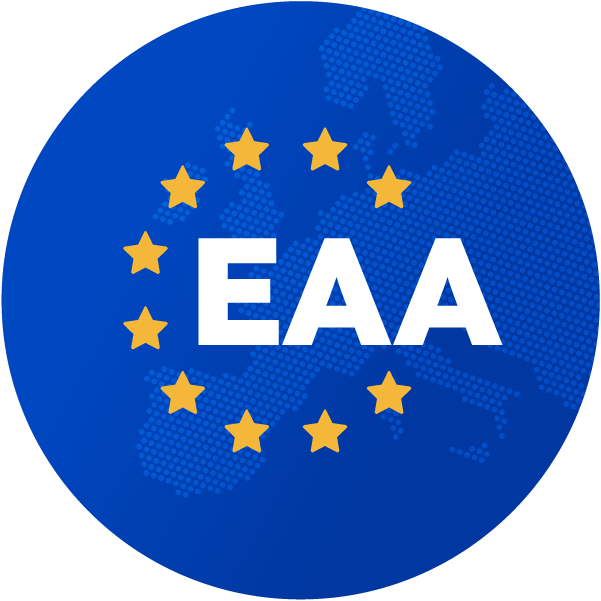
What is the European Accessibility act?
The European Accessibility Act (EAA) is a directive established by the European Union to ensure that products and services across member states are accessible to people with disabilities. Proposed in 2019, the EAA sets out specific accessibility requirements for a wide range of products and services, including websites, mobile applications, e-commerce platforms, self-service terminals, and more. The EAA is now fully in effect, with all digital content created after June 28, 2025, required to meet accessibility standards. A second deadline on June 28, 2030, will extend this requirement to all content, both new and existing.
The EAA was designed to create a more inclusive society by removing barriers that people with disabilities often face when accessing digital content, like videos, images, and PDFs. It also aims to homogenise accessibility standards across the EU, making it easier for businesses to operate across borders. Furthermore, consumers benefit from a more consistent online browsing experience as a result, regardless of where they are in Europe.
For Italian businesses, it’s an opportunity to tap into a market of disabled users which has been historically underserved. In doing so, companies can absorb a range of business benefits including; extending their customer reach, demonstrating a commitment to social responsibility, and improve the overall user experience.
Checking for EAA compliance is now easier than ever. At Recite Me, we offer a free website audit to spot any issues related to the European Accessibility Act and WCAG. You’ll get a clear action plan to help improve your website’s accessibility and meet EAA compliance.
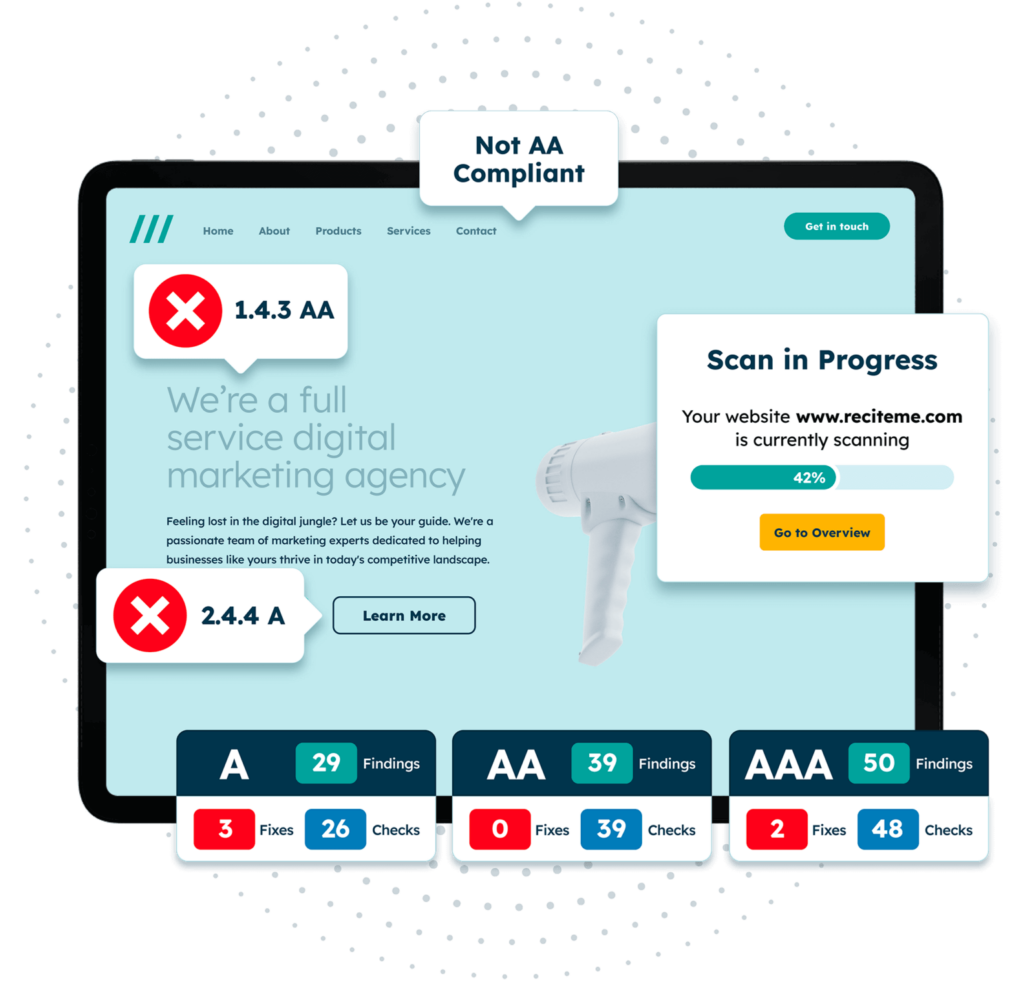
Italian accessibility laws that regulate the implementation of EAA
Italy has been proactive in ensuring that its digital environments are accessible to all citizens, including those with disabilities. This commitment is reflected in the country’s adoption of the European Accessibility Act (EAA) and its own national laws that regulate the implementation of accessibility standards.
The EAA sets a common framework across the European Union for accessibility requirements, ensuring that products and services are more accessible to people with disabilities. In Italy, the most significant piece of legislation in this area is the “Legge Stanca,” which specifically addresses web accessibility. This law, along with adherence to the Web Content Accessibility Guidelines (WCAG), ensures that digital services are usable by everyone, regardless of their abilities.
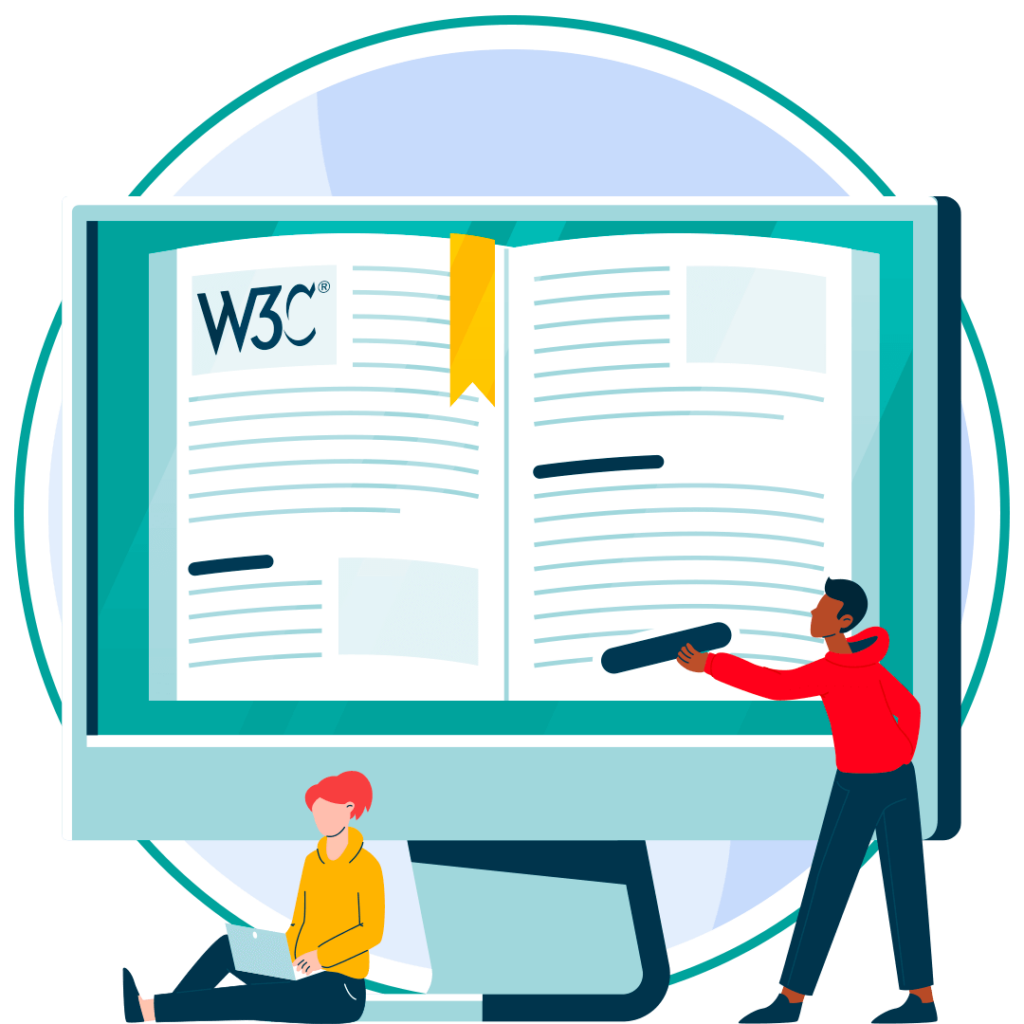
Web Content Accessibility Guidelines (WCAG)
The Web Content Accessibility Guidelines (WCAG) are the globally recognised standards for web accessibility. Developed by the World Wide Web Consortium (W3C), WCAG provides a comprehensive framework for making web content more accessible to people with disabilities. The guidelines are organised around four key principles: perceivable, operable, understandable, and robust (POUR).
Legge Stanca
The “Legge Stanca” (Law No. 4 of 9 January 2004) is the cornerstone of Italy’s web accessibility legislation. This law was designed to bridge the digital divide and ensure that all citizens, including those with disabilities, have equal access to digital content and services provided by public administrations, public services, and companies offering essential services.
Key provisions of the Legge Stanca include:
- Scope: The law applies to all public websites and digital services in Italy, as well as private companies that offer public utility services. This includes educational institutions, health services, and any other entities that are publicly funded or offer essential services to the public.
- Standards: Legge Stanca requires compliance with specific technical standards that are aligned with international guidelines, such as the WCAG.
- Fines for Non-Compliance: Fines can be substantial, reaching up to 5% of a company’s turnover, depending on the severity of the violation and the size of the organisation. This serves as a strong incentive for organisations to prioritise accessibility in their digital offerings.
- Enforcement and Complaints: The Agency for Digital Italy (AgID) is responsible for enforcing Legge Stanca. Citizens can file complaints with AgID if they encounter accessibility issues on websites or digital services that should be compliant with the law.
- Accessibility Statements: Legge Stanca also mandates that organisations publish an accessibility statement on their websites. This statement should outline the accessibility features of the website and provide information on how users can report accessibility issues. It is a key transparency measure that helps users understand the level of accessibility they can expect.
What are the EAA requirements for businesses in Italy?
For businesses operating in Italy, the EAA lays out specific requirements that must be met to ensure compliance. These European Accessibility Act requirements span various areas, including websites, mobile apps, e-commerce platforms, and even physical products like ATMs or ticketing machines. But what are these requirements? And what is involved in meeting them?
Web accessibility
First and foremost, any business that owns a website must make it fully accessible to all users, including those with disabilities. To do this, website owners and designers should adhere to the POUR principles outlined in the Web Content Accessibility Guidelines (WCAG): Perceivable, Operable, Understandable, and Robust. One example of this is to include alternative text for images, so that blind users who rely on assistive technology like screen readers can perceive them without hindrance.

The EAA also requires that all interactive elements of a website can be navigated via keyboard alone. This ensures that those with motor issues can operate a website without need for a mouse. Furthermore, captions and transcripts must be provided for videos, and all content must be presented in a clear way. What does this mean exactly? It means that content is easy to perceive and interact with. This is achieved by using sufficient colour contrast between text and background, clearly labelling interactive elements, and following a consistent EAA compliant web design.
Mobile app accessibility
Mobile accessibility is another important consideration for EAA compliance in Italy. In a similar way to websites, businesses with apps are required to provide text alternatives for their non-text content, such as images and buttons, to ensure that all information is compatible with screen readers.
Additionally, all app functionality should be available via keyboard navigation, and sufficient contrast between text and background colours must be maintained. This ensures that users with visual or motor impairments can effectively use the app without any major barriers to inclusion.
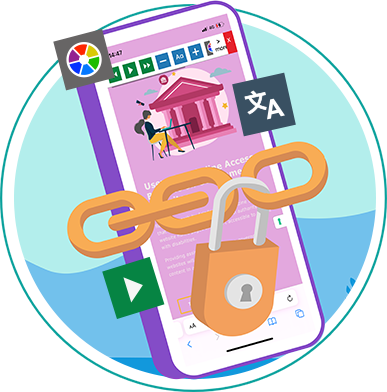
Electronic communications
The EAA is not just limited to the creation of digital platforms, however. Italian businesses must also ensure that their electronic communications, such as emails and messaging platforms, are made accessible to everyone. For the most part, this is done by ensuring that all text content is compatible with assistive technologies, like screen readers, and that clear and simple language is used wherever possible, but especially when giving instructions.
E-Commerce platforms
In order for e-commerce platforms to be EAA compliant, businesses must make their online stores navigable and usable for all customers. One way to do this might be to provide accessible payment options, or write product descriptions that are readable by screen readers. Businesses should also implement keyboard-friendly navigation and accessible forms to ensure that every aspect of the shopping experience is barrier-free.
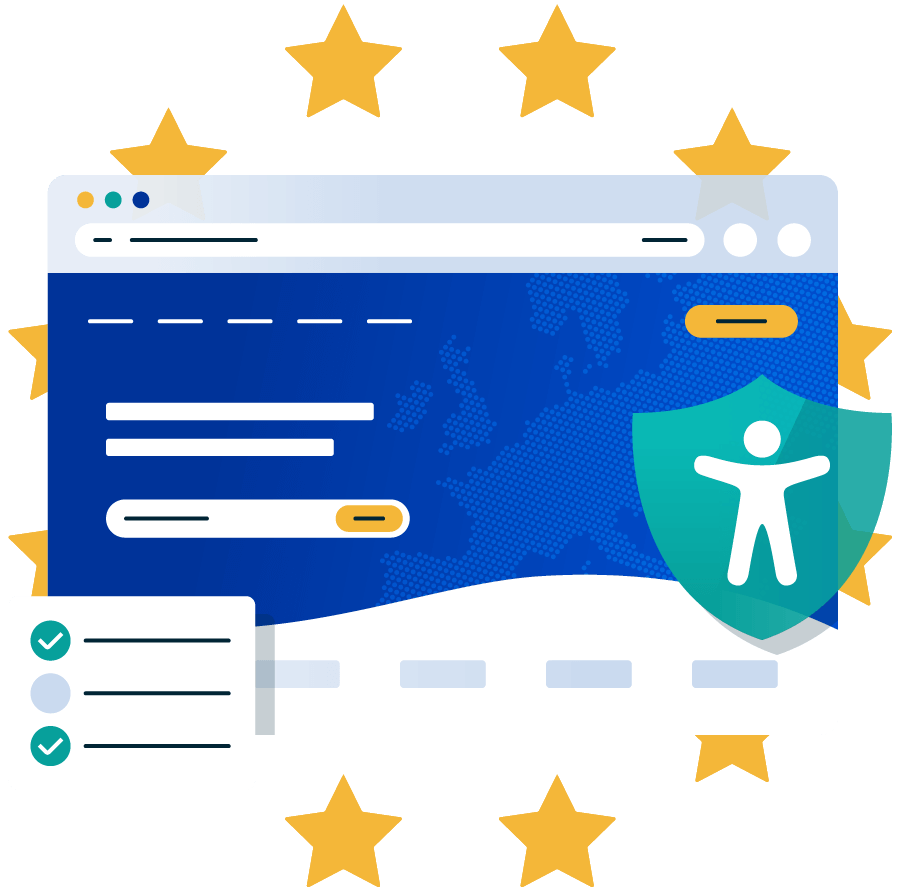
Information and Communication Technologies (ICT)
To meet EAA requirements in ICT, Italian businesses should ensure that all related products and services, including software and operating systems, are compatible with a range of assistive technologies, especially screen readers. Customisation options should also be offered for all user interfaces, as this helps cater to a wide range of accessibility needs without much effort on the part of the business.
To do this, consider opting for an accessibility solution, like Recite Me’s accessibility toolbar, which allows users to customise font size, colour contrasts, language, and more. Beyond EAA compliance, this is a great way to enhance the overall user experience.
Self-service terminals
When it comes to self-service terminals, such as ATMs, ticketing machines, and kiosks, features like tactile feedback should be commonplace alongside any touchscreen as an additional layer of sensory feedback. Similarly, audio guidance should be embedded into each terminal so that those with visual impairments can still complete their desired tasks with relative ease. These measures are essential, not only for EAA compliance, but to provide fair, equitable access to all services.

Which Italian organisations do the regulations apply to?
The EAA applies to a broad range of different organisations in Italy, from public sector bodies to private businesses. To make things clearer, any organisation in Italy that provides goods and services to the public, whether through digital or physical means, is subject to the EAA and its requirements. Below is a breakdown of various types of organisations that need to be particularly mindful of EAA compliance.
- Public sector organisations: Such as Government bodies, municipalities, and any other public institution.
- Private businesses: Such as e-commerce websites, mobile app developers, and service providers.
- Financial institutions: Such as banks and financial services, banking apps and ATMs.
- Education providers: Such as schools, universities, and other educational institutions.
- Healthcare providers: Such as hospitals, clinics, and other healthcare providers.
- Transport companies: Such as airlines, train operators, and bus companies.
- Telecommunication companies: Such as cell-phone, landline and other telecom providers.
- Retailers: Both online and physical retailers must ensure that their e-commerce sites, mobile apps, and in-store digital services, such as self-checkout kiosks, are accessible.
The EAA applies not only to large corporations, but some small and medium-sized enterprises too. Although they will need to have exceeded the following thresholds for EAA to apply: all businesses employing 10 or more employees and that make more than 2 million euros turnover annually.
Make sure your website meets the European Accessibility Act with our easy-to-follow EAA checklist. It covers all the key steps to get compliant before the deadline and helps you avoid penalties. Get started today!
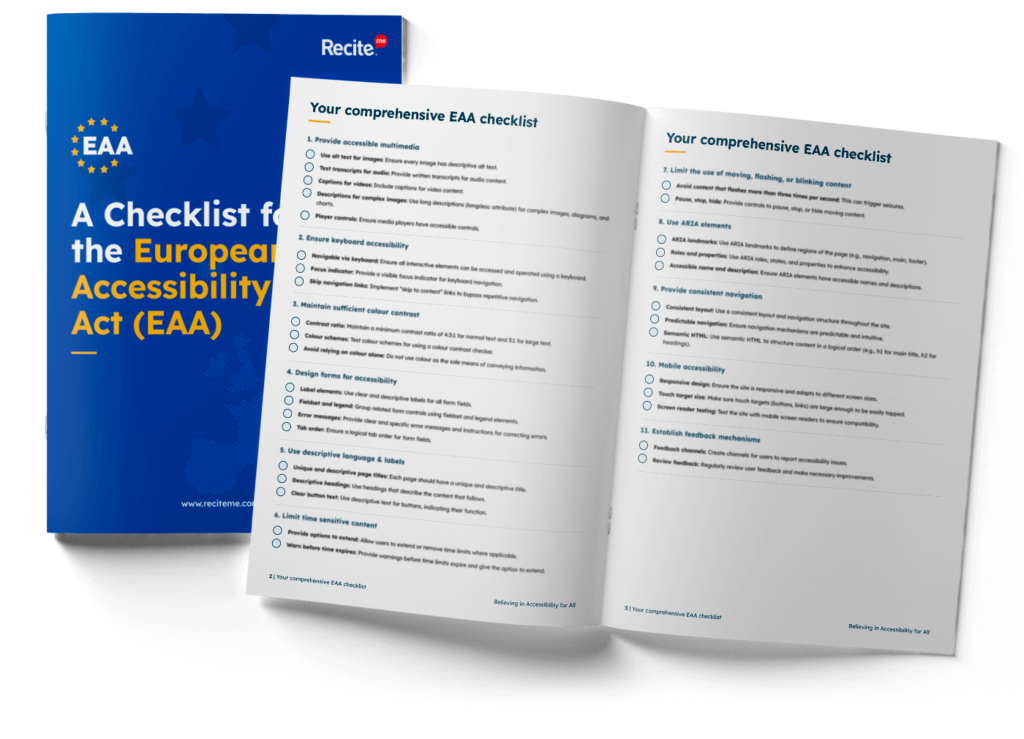
What are the risks of non-compliance in Italy?
Failure to comply with the EAA presents significant risk to your business, beyond just financial penalties. The implications can be severe and affect everything from your business’s financial health to your brand’s reputation.
Loss of Customer Trust
Non-compliance with the EAA in Italy can lead to a significant loss of customer trust. Consumers may view your business as irresponsible or neglecting social issues, giving them an excuse to turn to competitors who are more aligned with their world view. The result? A higher rate of customer churn and the undermining of your company’s bottom line.
Restricted Market Access
The EAA aims to create a uniform standard of accessibility across the European Union, and businesses that do not comply with these standards may face difficulties when trying to operate in other European markets. Non-compliance can, therefore, limit your business’s ability to expand internationally, restricting your market reach and growth opportunities within the EU.
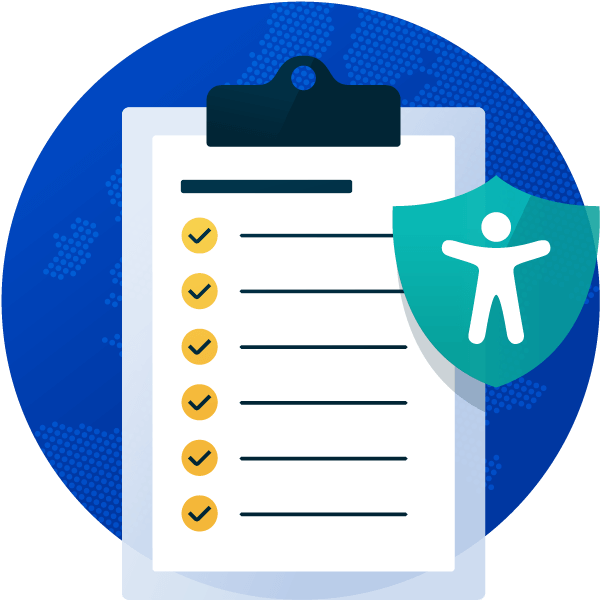
Hefty Financial Penalties
Let’s start with the most obvious risk – financial risk. Failure to meet the required standards set out by the EAA may incur substantial monetary fines imposed by Italian authorities. These fines vary depending on the severity of the non-compliance and the size of the business, but they can be substantial enough to cause strain, particularly for small to medium-sized enterprises.
European Accessibility Act fines can include:
- Up to 5% of an organisations turnover.
- Or between €5,000 to €40,000.
- Non-compliance can also result in the loss of government contracts and activity suspension by the Ministry of Economic Development.
Legal Actions and Lawsuits
Businesses that do not comply with the EAA are at risk of legal actions from individuals or advocacy groups representing people with disabilities. These lawsuits can be both time-consuming and costly, potentially resulting in hefty settlements or legal fees. The damage to a company’s reputation through prolonged legal battles can also have long-term effects on customer loyalty and brand image.
Reputational Damage
Failing to comply with the EAA can severely damage your brand’s reputation, as inclusivity is valued more now than ever before. In this sense, accessibility is an asset and a great means of obtaining a competitive edge over your competitors. On the contrary, being known as a business that neglects accessibility can lead to negative public perception, which can be challenging to repair, impacting your business’s long-term success.
Missed Opportunities for Innovation
Businesses in Italy that do not comply with the EAA may miss out on opportunities to innovate and improve their products or services. Improved user experience is part and parcel of accessibility. This is because the main aim is always to make life easier for potential customers as they browse your digital platform. Therefore, neglecting accessibility can result in failure to meet the evolving needs of a diverse customer base, stunting growth whilst your competitors continue to improve and innovate.
Steps to make your website EAA compliant in Italy
Achieving EAA compliance may seem daunting at first, but by implementing just a few simple strategies, and making use of some online tools, it can be achieved with relative ease. Below are a series of simple steps to help you become EAA compliant in Italy:
Conduct an Accessibility Audit
The first step towards compliance is understanding where your website currently stands in terms of accessibility. A European Accessibility Act compliance audit will help you identify areas that need improvement. This can be done using automated tools, manual testing, or a combination of both. Automated tools, like Recite Me’s accessibility checker, scan your website for any non-compliant features or issues that need to be addressed.
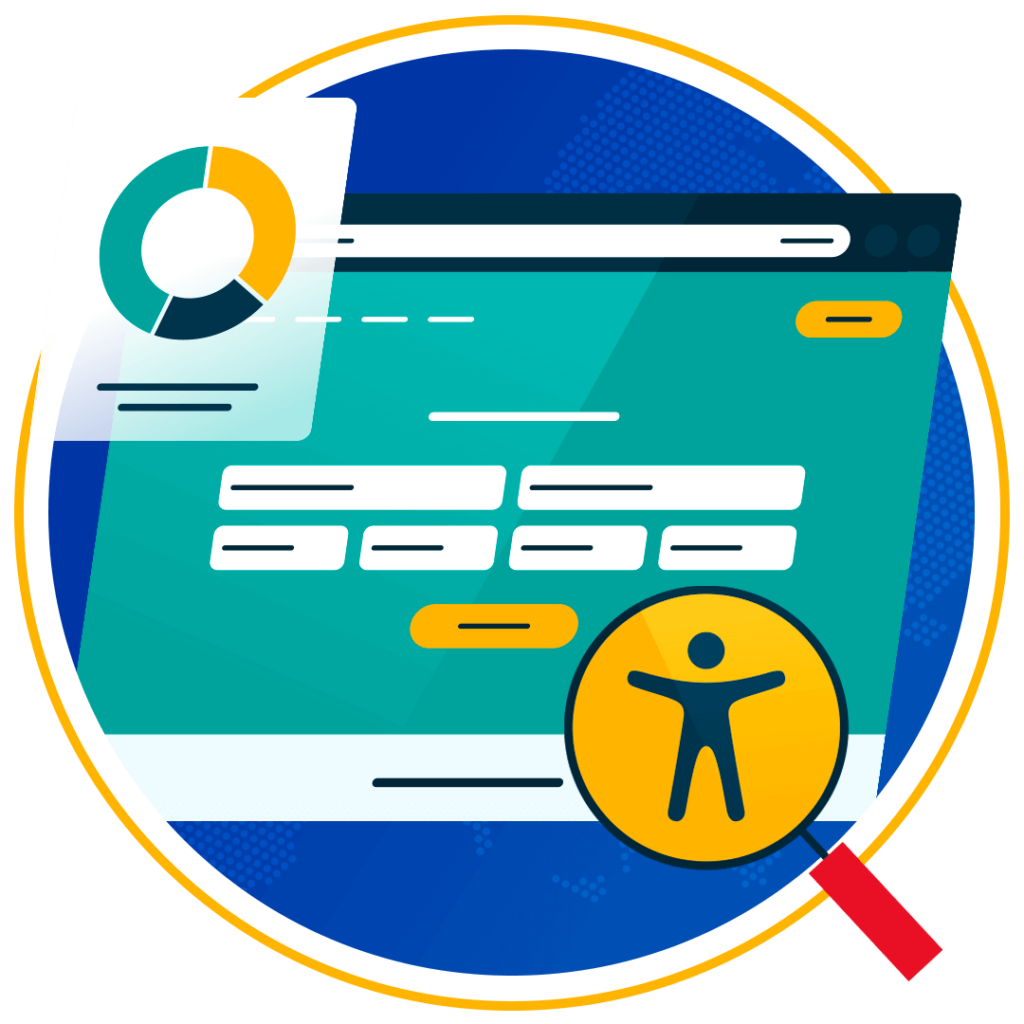
Test with Real Users
To ensure a high level of accessibility, you need to be rigorous with your testing, involving real users wherever possible. Yes, this means more auditing. While automated tools, like our accessibility checker, are great at finding and identifying accessibility issues, they should always be combined with manual testing by real users, particularly those with disabilities. This can help you identify issues that automated tools may miss and provide valuable insights into how to improve the overall user experience.
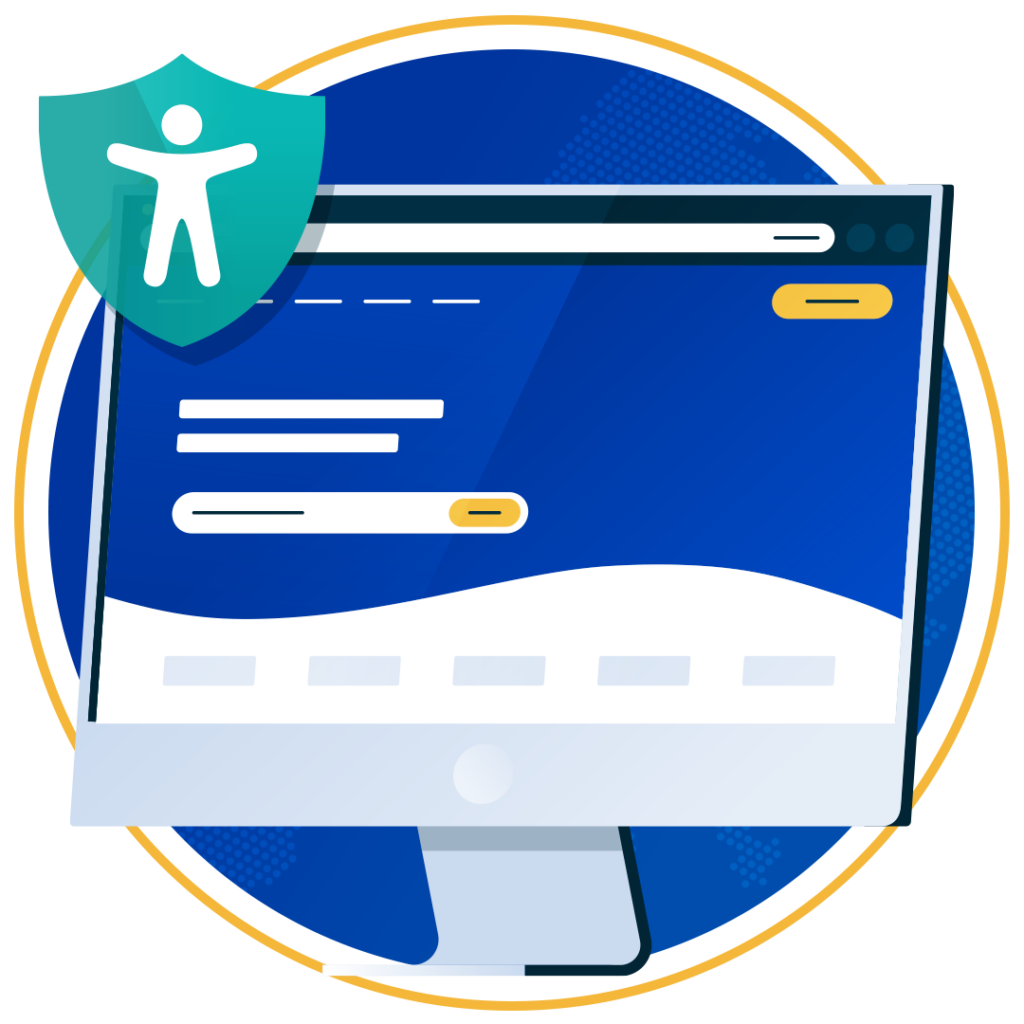
Implementing individual fixes on your website
While auditing and testing is great for identifying inaccessibility, it can’t fix the problems for you. For this you will need to go in and use the data provided by accessibility tests to start updating your website in line with Italian EAA regulations. This will help to ensure your business is European Accessibility Act compliant and avoid any of the potential negative consequences associated with non-compliance.
If you are looking for a quick and easy way to implement fixes, be sure to check out our EAA compliance checklist.
Deploy accessibility and EAA training in the workforce
The more information and knowledge your employees or colleagues have, the better positioned they are to act. By providing a combination of generalised accessibility training, and training specific to the European Accessibility Act, your organisation can be more aware of their importance. Allowing you to seamlessly integrate accessibility best practices and stay compliant.
You can download our free European Accessibility Training Course here.
Need more help becoming EAA compliant?
The following resources are packed full of actionable tips and expert advice for making your digital content compliant with the European Accessibility Act:
Free EAA Compliance Training
Take the first step to European Accessibility compliance by completing our EAA training course.
Free EAA Compliance Guide
Ensure your organisation is meeting the necessary requirements for European Accessibility Act compliance.
Free EAA Audit of your Website
Download a free accessibility check of your website. This report will highlight any EAA non-compliance and how to fix it.

